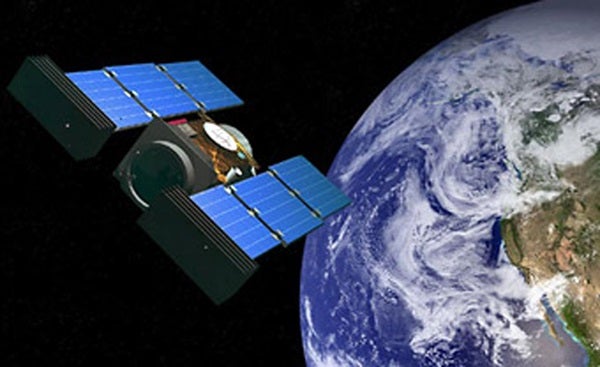Just three days shy of one year before its planned flyby of comet Tempel 1, NASA’s Stardust spacecraft successfully maneuvered to adjust the time of its encounter by 8 hours and 20 minutes. The delay maximizes the probability of the spacecraft capturing high-resolution images of the desired surface features of the 1.86-mile-wide (2.99 kilometer) potato-shaped mass of ice and dust.
With the spacecraft on the opposite side of the solar system and beyond the orbit of Mars, the trajectory correction maneuver began at 5:21 p.m. EST February 17. Stardust’s rockets fired for 22 minutes and 53 seconds, changing the spacecraft’s speed by 54 miles per hour (24 meters per second).
Stardust’s maneuver placed the spacecraft on a course to fly by the comet just before 11:42 p.m. EST February 14, 2011. Time of closest approach to Tempel 1 is important because the comet rotates, allowing different regions of the comet to be illuminated by the Sun’s rays at different times. Mission scientists want to maximize the probability that areas of interest previously imaged by NASA’s Deep Impact mission in 2005 will also be bathed in the Sun’s rays and visible to Stardust’s camera when it passes by.
“We could not have asked for a better result from a burn with even a brand-new spacecraft,” said Tim Larson, project manager for the Stardust-NExT at NASA’s Jet Propulsion Laboratory, Pasadena, California. “This bird has already logged one comet flyby, one Earth return of the first samples ever collected from deep space, over 4,000 days of flight, and approximately 3.4 billion miles (5.4 billion kilometers) since launch.”
Launched February 7, 1999, Stardust became the first spacecraft in history to collect samples from a comet and return them to Earth for study. While its sample return capsule parachuted to Earth January 2006, mission controllers were placing the still viable spacecraft on a trajectory that would allow NASA the opportunity to re-use the already-proven flight system if a target of opportunity presented itself. In January 2007, NASA re-christened the mission “Stardust-NExT” (New Exploration of Tempel), and the Stardust team began a four-and-a-half year journey to comet Tempel 1. This will be humanity’s second exploration of the comet — and the first time a comet has been “re-visited.”
“Stardust-NExT will provide scientists the first opportunity to see the surface changes on a comet between successive visits into the inner solar system,” said Joe Veverka, principal investigator of Stardust-NExT from Cornell University, Ithaca, New York. “We have theories galore on how each close pass to the Sun causes changes to a comet. Stardust-NExT should give some teeth to some of these theories, and take a bite out of others.”
Along with the high-resolution images of the comet’s surface, Stardust-NExT will also measure the composition, size distribution, and flux of dust emitted into the coma, and provide important new information on how Jupiter family comets evolve and how they formed 4.6 billion years ago.










